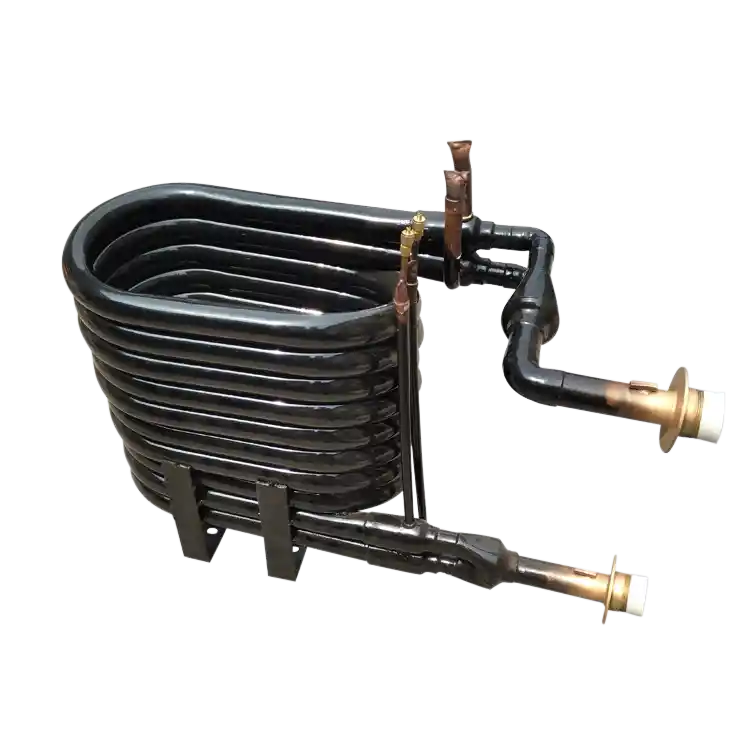Introduction
Tube extrusion plays a pivotal role in the manufacturing process of coaxial heat exchangers. This article explores the process of tube extrusion and its significance in producing high-quality tubes for efficient heat transfer. By delving into the intricacies of tube extrusion, manufacturers can optimize the performance and reliability of coaxial heat exchangers.
1. Understanding Tube Extrusion
Tube extrusion is a widely used technique in the production of coaxial heat exchanger tubes. It involves the process of forcing a material through a die to create a tube with precise dimensions and desired properties. The following sections delve into the different aspects and considerations involved in tube extrusion for coaxial heat exchangers.
1.1 Materials for Tube Extrusion
The choice of material for tube extrusion depends on various factors, including thermal conductivity, corrosion resistance, mechanical strength, and cost-effectiveness. The most commonly used materials in tube extrusion for coaxial heat exchangers include stainless steel, copper, and titanium.
1.1.1 Stainless Steel
Stainless steel is favored for its excellent corrosion resistance, high-temperature strength, and durability. The table below provides a comparison of different stainless steel grades used in tube extrusion for coaxial heat exchangers:
| Stainless Steel Grade | Corrosion Resistance | Temperature Range |
|---|---|---|
| 304 | Excellent | Up to 870°C |
| 316 | Excellent | Up to 925°C |
| 321 | Excellent | Up to 870°C |
1.1.2 Copper
Copper is renowned for its exceptional thermal conductivity, making it an ideal choice for applications requiring efficient heat transfer. The following table showcases various copper alloys commonly used in tube extrusion for coaxial heat exchangers:
| Copper Alloy | Thermal Conductivity (W/m·K) | Corrosion Resistance |
|---|---|---|
| C11000 Electrolytic Tough Pitch Copper | 390 | Excellent |
| C12200 Phosphorus-Deoxidized Copper | 380 | Excellent |
| C70600 Copper-Nickel Alloy | 29 | Excellent |
1.1.3 Titanium
Titanium is renowned for its exceptional strength-to-weight ratio, corrosion resistance, and high-temperature stability. It finds applications in specialized coaxial heat exchangers operating in demanding environments. The table below highlights different titanium grades commonly used in tube extrusion:
| Titanium Grade | Corrosion Resistance | Temperature Range |
|---|---|---|
| Grade 2 | Excellent | Up to 400°C |
| Grade 7 | Excellent | Up to 300°C |
| Grade 12 | Excellent | Up to 450°C |
1.2 Tube Extrusion Process
The tube extrusion process consists of several stages, including billet preparation, heating, extrusion, and finishing. The subsections below provide an overview of each stage:
1.2.1 Billet Preparation
The tube extrusion process begins with the preparation of a cylindrical billet, which serves as the starting material for extrusion. The billet is typically preheated to facilitate the extrusion process.
1.2.2 Heating
The preheated billet is further heated to an optimal temperature based on the material being extruded. The temperature ensures the material’s malleability, allowing it to flow smoothly through the extrusion die.
1.2.3 Extrusion
During extrusion, the heated billet is forced through a die, which imparts the desired shape and dimensions to the tube. The extrusion process applies high pressure to overcome the material’s resistance and produce a continuous tube.
1.2.4 Finishing
After extrusion, the newly formed tube undergoes finishing processes to achieve the required surface finish, dimensions, and straightness. These processes may include trimming, sizing, straightening, and surface treatment.
1.3 Advantages of Tube Extrusion
Tube extrusion offers several advantages in the production of coaxial heat exchanger tubes:
- High Precision: Tube extrusion enables the production of tubes with precise dimensions, ensuring a perfect fit in the coaxial heat exchanger assembly.
- Uniformity: The extrusion process ensures consistent material properties and wall thickness throughout the length of the tube, promoting efficient heat transfer.
- Complex Geometries: Tube extrusion allows for the creation of tubes with intricate geometries, enabling design flexibility and optimization of heat transfer performance.
- Improved Surface Finish: The extrusion process results in a smooth and uniform surface finish, reducing flow resistance and minimizing fouling.
Conclusion
Tube extrusion plays a critical role in the production of coaxial heat exchanger tubes, providing manufacturers with the means to create high-quality, efficient, and durable components. By carefully selecting materials and employing precise extrusion techniques, manufacturers can ensure the dimensional accuracy, uniformity, and surface finish required for optimal heat transfer performance. The utilization of stainless steel, copper, and titanium in tube extrusion enables the customization of coaxial heat exchangers to suit various industrial applications, ranging from HVAC systems to chemical processes and beyond.


